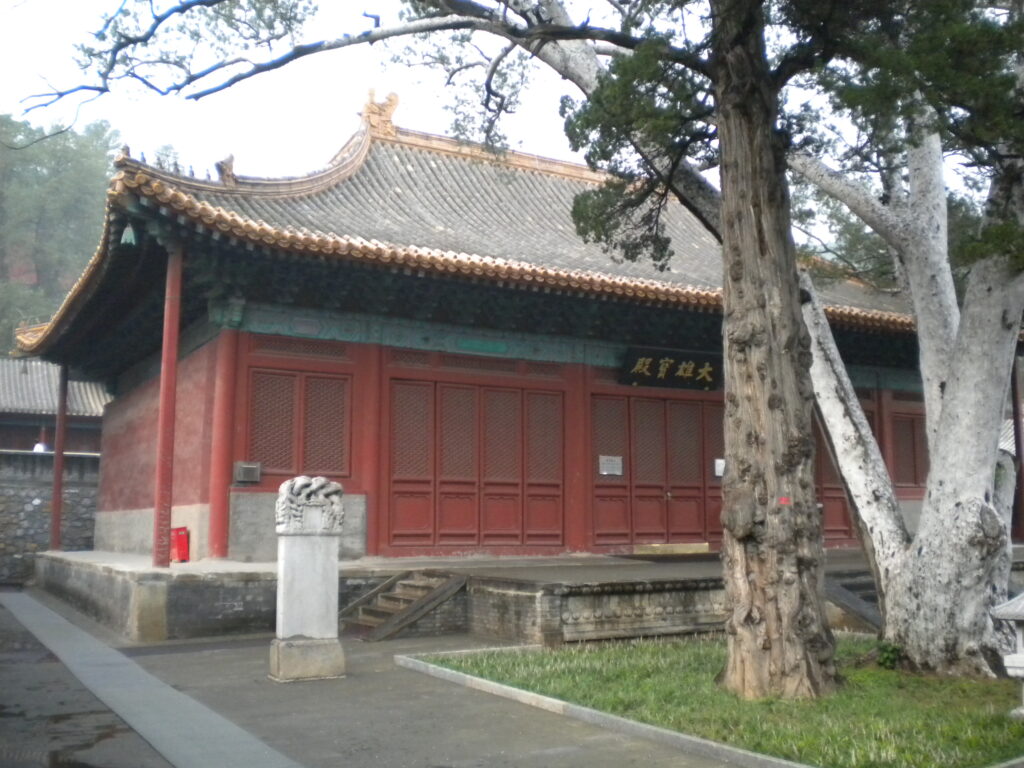

Tiffany Holman/Our Today Writer
Beijing, China:
Fahai Temple, located on the western outskirts of Beijing, is one of the most impressive examples of Ming Dynasty architecture and painting in China.
Built in the early 15th century by the eunuch Li Tong, the temple is a testament to the Ming Dynasty’s embrace of Buddhism and the religious patronage of powerful courtiers.
WATCH:
The temple’s main hall is adorned with a series of frescoes that are considered some of the finest examples of Chinese painting from the period, showcasing the technical mastery and creative imagination of Ming Dynasty artists.
The temple’s frescoes are notable for their vibrant colours, intricate brushwork, and vivid depictions of Buddhist deities, mythical figures, and historical events. The frescoes come in a range of styles, from the elegant linearity of the “fine line” tradition to the bold and expressive “heavy colour” style. The use of these various techniques and styles creates a sense of dynamism and visual richness that is characteristic of Ming Dynasty art.
The frescoes also reveal the influence of the Northern School of Chinese painting, which emphasized the use of line and the importance of texture and pattern. The figures in the frescoes are rendered with a high degree of realism, conveying a sense of three-dimensionality and volume. The use of shading and the play of light and shadow contribute to the overall sense of depth and spatial illusionism that is characteristic of Ming Dynasty painting.
The subjects of the frescoes are equally notable, depicting a range of Buddhist and secular themes that reflect the cosmopolitanism and openness of the Ming Dynasty. The frescoes feature images of Buddhist divinities, including the bodhisattva Guanyin, as well as scenes from Chinese mythology and history. These themes reflect the syncretic nature of Ming Dynasty religious and cultural life, which combined elements of Buddhism, Confucianism, and Taoism.
The hall features a large, open interior space that is supported by a series of wooden pillars and beams, creating a sense of grandeur and spaciousness. The use of brick and stone in the temple’s construction adds to its solidity and permanence, while the intricate carvings and decorative details reflect the refined artistic sensibility of the Ming Dynasty.
The architecture of Fahai Temple is also noteworthy for its integration of traditional Chinese building techniques and materials. The temple’s main hall is constructed with a timber frame, a technique that was common in traditional Chinese architecture.

Fahai Temple’s artistic and architectural achievements are a testament to the cultural and artistic flowering of the Ming Dynasty. The temple’s frescoes, in particular, demonstrate the technical skill and creative imagination of Ming Dynasty artists, as well as the syncretic nature of Ming Dynasty culture. As such, Fahai Temple is an important icon of Chinese artistic expression, and a must-visit site for anyone interested in the history and art of China.







Comments